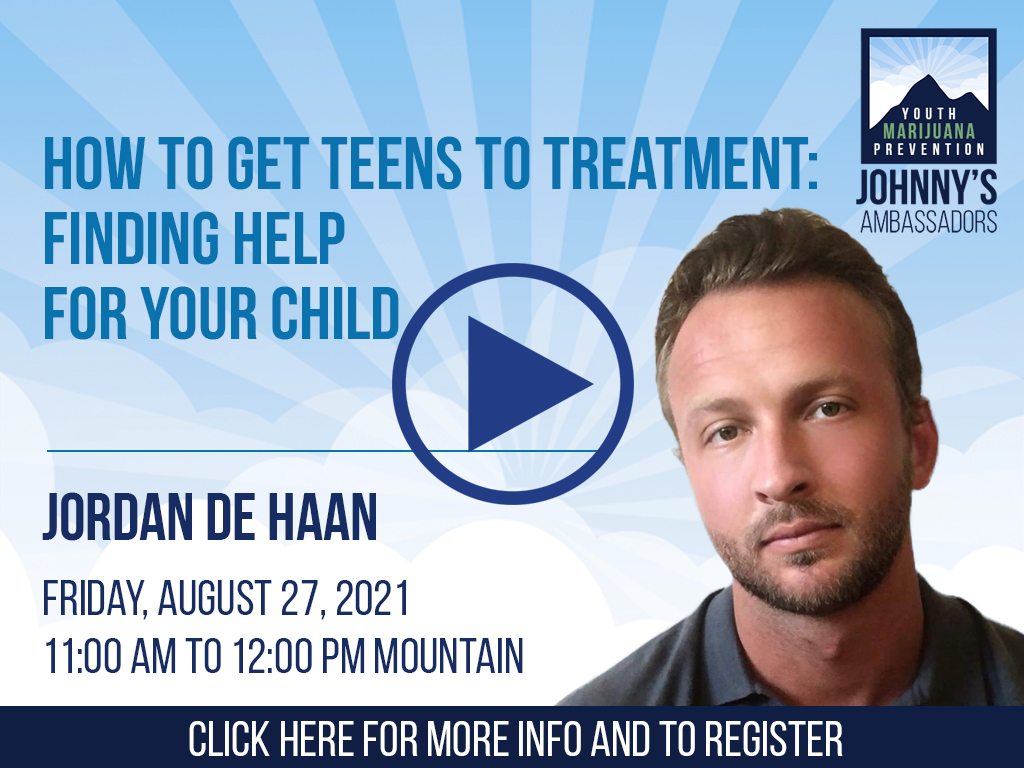How to Get Teens to Treatment: Finding Help for Your Child
Featured expert: Jordan de Haan
Cost: $0 (But we would welcome your donation!)
Please join our Johnny’s Ambassadors in ACTION Facebook Group!
Watch this video on Rumble and please SUBSCRIBE to our show!

Description
What do you do when your child is in Cannabis Induced Psychosis (CIP)? What kind of services are available to help you get treatment for your loved one? What if your child is over 18 years old? The Recovery Guides is a behavioral health services provider. Our team has decades of experience within the behavioral health space, and our staff has facilitated hundreds of adult and adolescent interventions with over 3500 hours of direct intervention experience. Our goal is to help clients accept treatment, get to treatment, and to build ancillary supervisions systems as clients step down in level of care. We are committed to partnering with the best clinicians, treatment centers, and therapeutic consultants.
Learning Objectives
Intervention
- What is an intervention? What are the different types and how do I find one?
- Crisis Navigation and how it differs from formal Intervention.
- How do you know what treatment center to place someone in?
Adolescent Transport
- What is adolescent transport? How does it work and when is it necessary?
Recovery Detective
- How do private investigators integrate with behavioral health?
Case Management & In-Home Support Staff
- What is it? Is it really necessary and how does it work?
- Is it treatment? Can treatment be done privately and in the home?
Remote Supervision & Drug/Alcohol Testing
- Saliva Testing
- SoberLink
- TrueLink Financial
Speaker Bio
Jordan de Haan is the Executive Director of the Recovery Guides. Like so many others, he first encountered behavioral health problems as a client. When I was 13, I started to experience depression and anxiety, and in the span of six months went from a happy, driven kid to struggling with suicidal ideation and failing all of my classes. I then found cannabis and felt relief for the first time in what felt like an eternity. I immediately latched on to it and quickly progressed into more and harder substances (while always keeping cannabis as a constant).
By the age of 21, I found myself facing recurring legal troubles and was broken, both mentally and physically. It was only through going to treatment that I slowly began to see that there was an alternative. Fortunately, I was connected with great young adult treatment programs that slowly helped me get my life back. While still in these programs, I realized that I wanted to remain a part of them professionally. Looking back, entering treatment for the first time was truly the point where my whole life began to change, and I yearned to be able to be some small part of that process for others as well.
Questions?
Email Founder & CEO, Laura Stack, at [email protected].

